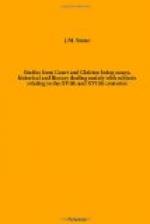Neither the fiery denunciations of Fra Girolamo Savonarola, nor the cold sarcasms of Erasmus of Rotterdam had a more lasting effect on the world than had Busch’s missionary zeal or Geiler’s ascetic discourses. Then arose Martin Luther, and centered in himself all those scandals and floating heresies, which for a hundred years had poisoned the spiritual and intellectual atmosphere. Insidious disease lurking in dark places was now become a stalking pestilence that braved the daylight unabashed. Faith was all but moribund. But the Church’s extremity was God’s opportunity; His hour had struck at last, and the spirit of the Lord brooded on the face of the waters.
Then the whole situation was changed. The enemy was not yet crushed, but formidable hosts were everywhere set in opposition to him. Instead of isolated efforts there was an almost universal movement towards reform. Begun in Italy, it spread into every country of Europe. Seminaries sprang up for the education of priests; St. Philip Neri became the Apostle of Rome, St. Charles Borromeo that of Milan. The Order of Theatines was founded, and the Barnabite Order, devoted to the education of youth was ready to send its members wherever the need was greatest. Above all, the long-deferred General Council, assembled at Trent in 1545, gave cohesion to all the various movements that were set on foot by defining disputed doctrines, and by drawing up a formula which declared the belief of the Catholic Church on all points attacked by the new sectaries. The Church was threatened with a dozen heresies, but so completely did she vindicate her doctrines at the Council of Trent, that for more than three hundred years no further General Council was needed. If Italy may boast of the victories achieved by her great Catholic reformers, France, though somewhat later in the field had her Bossuet, Bourdaloue, St. Francis of Sales, St. Vincent of Paul, and many other Catholic champions. To Spain were given St. Ignatius of Loyola, St. Francis Borgia, St. Francis Xavier, St. Peter of Alcantara, St. John of the Cross, St. John of God, St. Joseph Calasanctius, St. Teresa, and others whose names have first added a splendour to their native land, and have then gone forth to illumine the uttermost ends of the earth.




